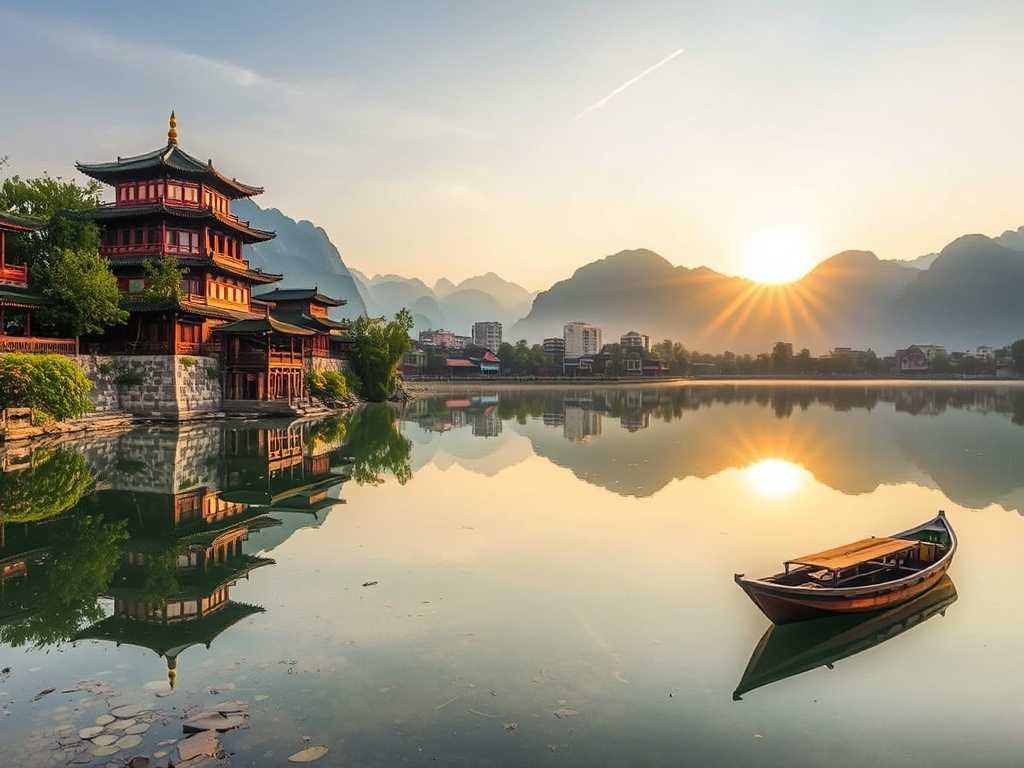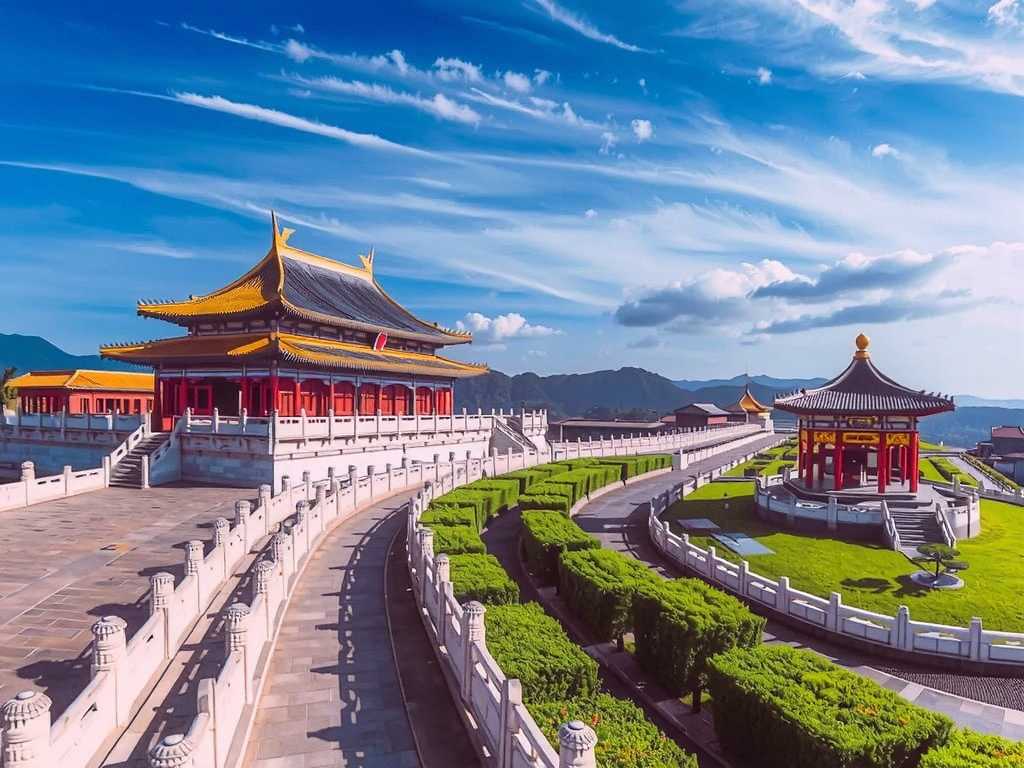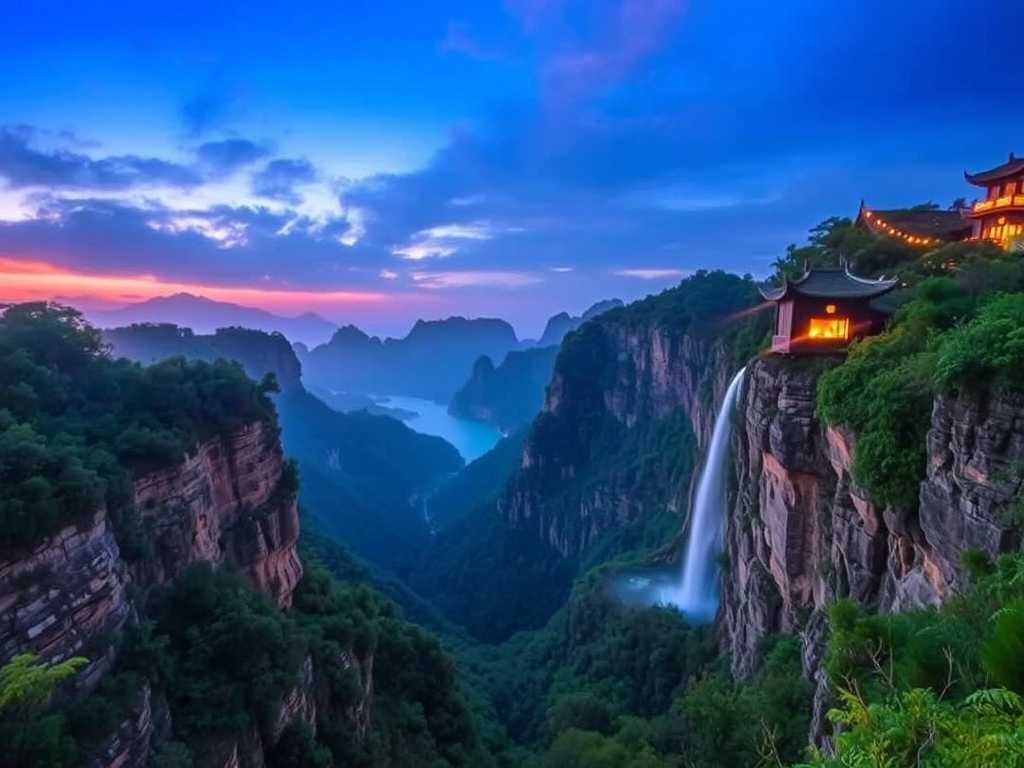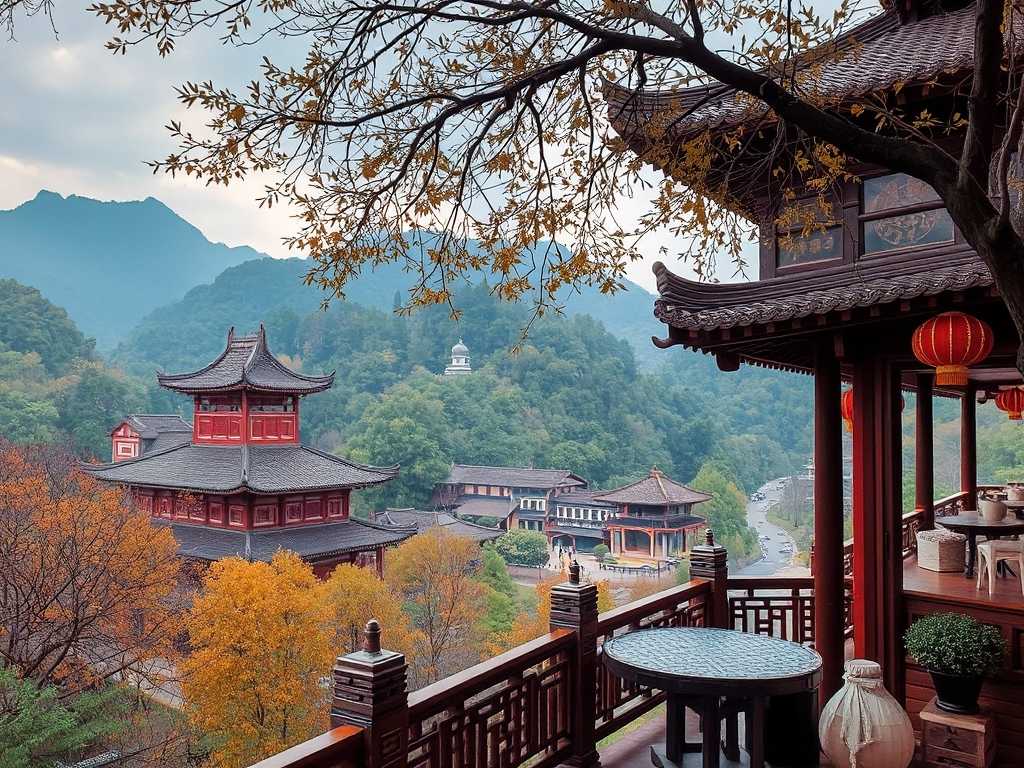China is a land of breathtaking contrasts, where ancient traditions whisper on the mountain breeze and modern vitality pulses through its cities. To truly understand this vast nation, one must venture beyond the well-trodden paths of its urban centers and embark on a journey to explore its scenic gems, where nature and culture are inseparably intertwined. This is not just a tour; it's an immersive experience into the soul of a civilization.
Imagine standing on a great wall, not of brick and stone, but of karst limestone, their jagged peaks piercing the morning mist. This is the Li River Valley in Guilin. A boat cruise here is less like a simple journey and more like floating through a living, breathing Chinese watercolor painting. The serene waters reflect the surreal shapes of the hills, each one named for the form it resembles—Elephant Trunk Hill, a natural arch drinking from the river; or Nine Horse Fresco Hill, challenging your imagination. This is the quintessential China scenic landscape, a masterpiece of nature that has inspired poets and painters for centuries. It’s a gentle, calming introduction to the country’s natural beauty, perfect for those seeking a peaceful retreat and incredible photography opportunities.
For a completely different, yet equally majestic, natural spectacle, journey to Zhangjiajie National Forest Park in Hunan province. This place feels like it was designed by the gods of fantasy. Thousands of towering quartz-sandstone pillars, shrouded in clouds and mist, rise dramatically from the forest floor. Walking through this ethereal landscape, you’ll understand why it was the direct inspiration for the floating Hallelujah Mountains in the movie Avatar. For the adventurous traveler, the best way to appreciate this grandeur is to walk the glass-bottomed Zhangjiajie Grand Canyon Bridge, suspended high above the dizzying depths. It’s a heart-pounding experience that offers unparalleled views. This is a premier destination for any China travel itinerary focused on unique geological wonders and adventurous hiking trails.

From these southern forests, we travel to the arid, otherworldly beauty of the Gobi Desert in Dunhuang. Here, the wind has sculpted the landscape into a symphony of shapes and sounds. The Singing Sand Dunes are a phenomenon where the sand, when sliding down the slopes, produces a deep, resonating hum. Climbing these dunes at sunset is a magical experience, with the shifting colors of the sky painting the endless sands in hues of orange and purple. But the true cultural treasure lies at the foot of these dunes: the Crescent Lake, a stunning, spring-fed oasis shaped like a crescent moon that has miraculously survived the surrounding desert for over two thousand years. This serene pool, reflecting the surrounding sands, is a powerful symbol of life and resilience.
Our exploration of China's natural diversity would be incomplete without witnessing the power of water. Huanglong (Yellow Dragon) in Sichuan is a valley of stunning, travertine-formed pools. These terraced, multi-colored pools, filled with turquoise and jade-green water, cascade down the valley like a giant, golden dragon basking in the sun. The mineral-rich waters, flowing over centuries, have created these breathtaking natural sculptures. A short distance away lies Jiuzhaigou Valley, a place of almost mythical beauty. Its name means "Valley of Nine Villages," and it is famed for its multi-level waterfalls, crystal-clear blue and green lakes, and snow-capped peaks. Visiting these UNESCO World Heritage sites is like stepping into a fairy tale, offering some of the most pristine and vibrant natural scenery on earth.
Yet, in China, nature is rarely just nature. It is a canvas upon which thousands of years of culture have been painted. The most iconic fusion of human will and the natural landscape is, without a doubt, the Great Wall of China. Snaking its way over rugged mountains and barren ridges, the Wall is more than a monument; it's a testament to human perseverance. Hiking a restored section like Mutianyu offers comfort and spectacular views, while a trek on a wild, unrestored section like Jiankou provides a raw, adventurous connection to history. Standing on those ancient bricks, looking at the wall disappear over endless mountain peaks, you feel the weight of history and the sheer scale of this incredible defensive marvel. It is the ultimate symbol of China's ancient civilization and its enduring spirit.
For a deeper dive into China's spiritual and philosophical heritage, the sacred mountains offer a profound journey. Mount Huangshan (the Yellow Mountain) is the most celebrated. It is famous for its "four natural wonders": peculiarly shaped pine trees, hot springs, sea of clouds, and grotesque rock formations. For centuries, it has been a prime subject in Chinese art and literature, a place where scholars sought inspiration and hermits sought solitude. The pilgrimage to its summit, often undertaken at dawn to witness the sunrise above the clouds, is a physically demanding but spiritually rewarding experience.
Similarly, Mount Tai (Taishan) in Shandong province has been the most revered of China's Five Great Mountains for over 3,000 years. It was a central site for emperors to perform sacred rituals to heaven and earth. Climbing the 7,000 stone steps to the summit is to walk in the footsteps of emperors, poets, and pilgrims. The path is lined with ancient inscriptions, temples, and archways, each with its own story. Reaching the summit at sunrise, just as countless generations have done before, is a moment of pure transcendence, connecting you to the very core of Chinese imperial and spiritual history.
To understand the harmonious philosophy that underpins traditional Chinese life, one must visit a classical Chinese garden. The Humble Administrator’s Garden in Suzhou is a masterpiece of the genre. Unlike Western gardens that often emphasize symmetry and control, Chinese gardens are designed to recreate a miniature, idealized natural landscape. Every element—the winding pathways, the strategically placed pavilions, the gnarled bonsai trees, the lotus-filled ponds, and the "borrowed scenery" from distant pagodas—is meticulously planned to create a sense of serene balance and endless variety. Strolling through these gardens is a lesson in Taoist and Confucian principles, a peaceful retreat that encourages contemplation and appreciation for the beauty in small, carefully composed details.
Finally, for a truly unique cultural immersion, the Yuanyang Rice Terraces in Yunnan offer a stunning example of human ingenuity working in concert with nature. Carved into the steep slopes of the Ailao Mountains by the Hani people over 1,300 years ago, these terraces form a vast, cascading landscape. Depending on the season, they present a different face—filled with water in winter, reflecting the sky like a giant mosaic of mirrors; or lush with green and golden rice shoots in spring and autumn. Visiting the Hani villages and witnessing this sustainable agricultural system is to see a living culture that has maintained a sacred relationship with its environment for millennia. It’s a powerful reminder that China's scenic gems are not just for viewing, but are the very foundation of life and community.

To truly explore China is to understand that its greatest treasures lie at the intersection of the earthly and the divine, the natural and the man-made. From the painted peaks of Zhangjiajie to the silent strength of the Great Wall, and from the tranquil gardens of Suzhou to the reflective pools of Huanglong, each destination tells a part of China's grand, ongoing story. It’s a journey that satisfies not just the eye, but also the mind and the soul.





发表评论